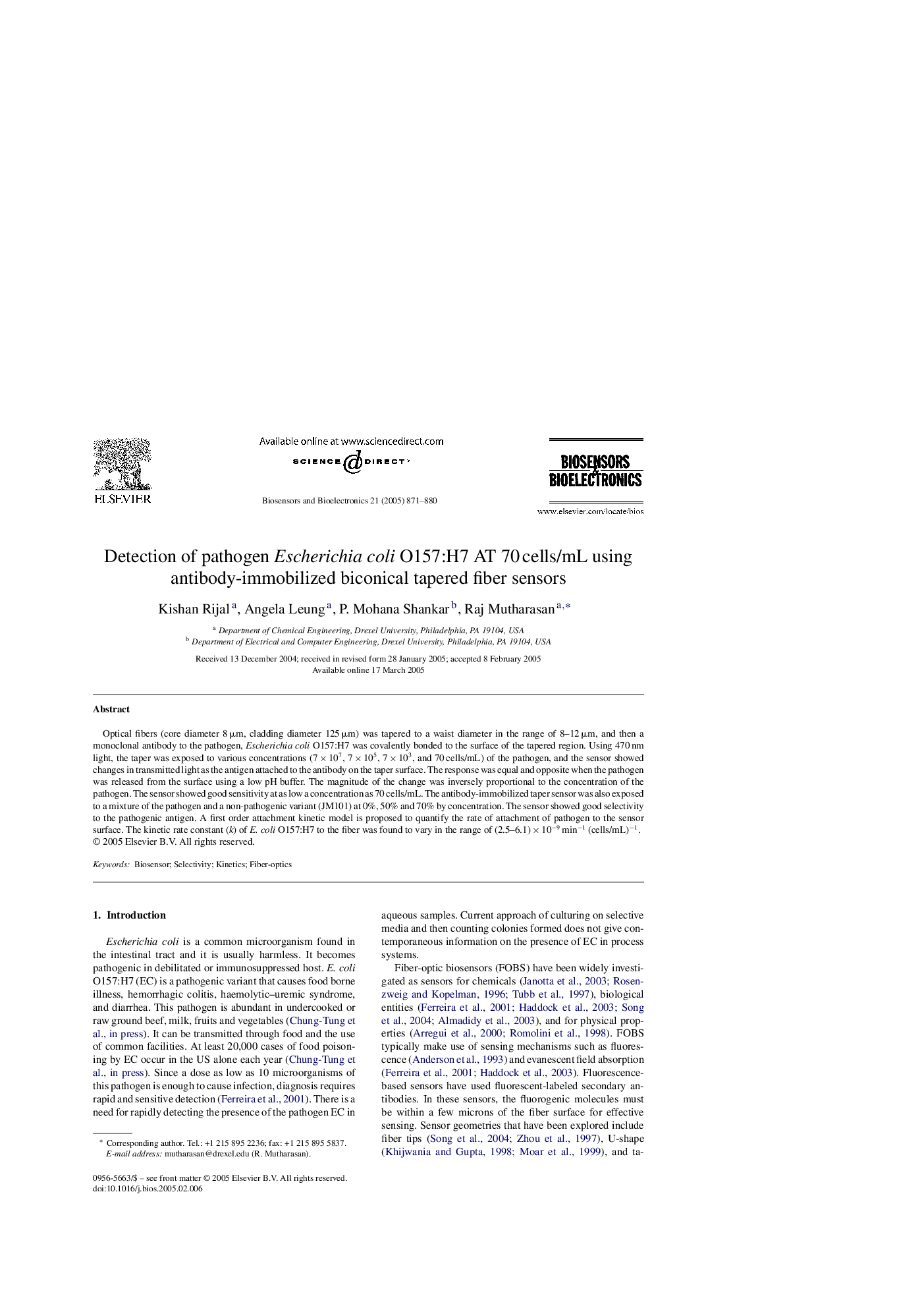| Article ID | Journal | Published Year | Pages | File Type |
|---|---|---|---|---|
| 10429569 | Biosensors and Bioelectronics | 2005 | 10 Pages |
Abstract
Optical fibers (core diameter 8 μm, cladding diameter 125 μm) was tapered to a waist diameter in the range of 8-12 μm, and then a monoclonal antibody to the pathogen, Escherichia coli O157:H7 was covalently bonded to the surface of the tapered region. Using 470 nm light, the taper was exposed to various concentrations (7 Ã 107, 7 Ã 105, 7 Ã 103, and 70 cells/mL) of the pathogen, and the sensor showed changes in transmitted light as the antigen attached to the antibody on the taper surface. The response was equal and opposite when the pathogen was released from the surface using a low pH buffer. The magnitude of the change was inversely proportional to the concentration of the pathogen. The sensor showed good sensitivity at as low a concentration as 70 cells/mL. The antibody-immobilized taper sensor was also exposed to a mixture of the pathogen and a non-pathogenic variant (JM101) at 0%, 50% and 70% by concentration. The sensor showed good selectivity to the pathogenic antigen. A first order attachment kinetic model is proposed to quantify the rate of attachment of pathogen to the sensor surface. The kinetic rate constant (k) of E. coli O157:H7 to the fiber was found to vary in the range of (2.5-6.1) Ã 10â9 minâ1 (cells/mL)â1.
Related Topics
Physical Sciences and Engineering
Chemistry
Analytical Chemistry
Authors
Kishan Rijal, Angela Leung, P. Mohana Shankar, Raj Mutharasan,
